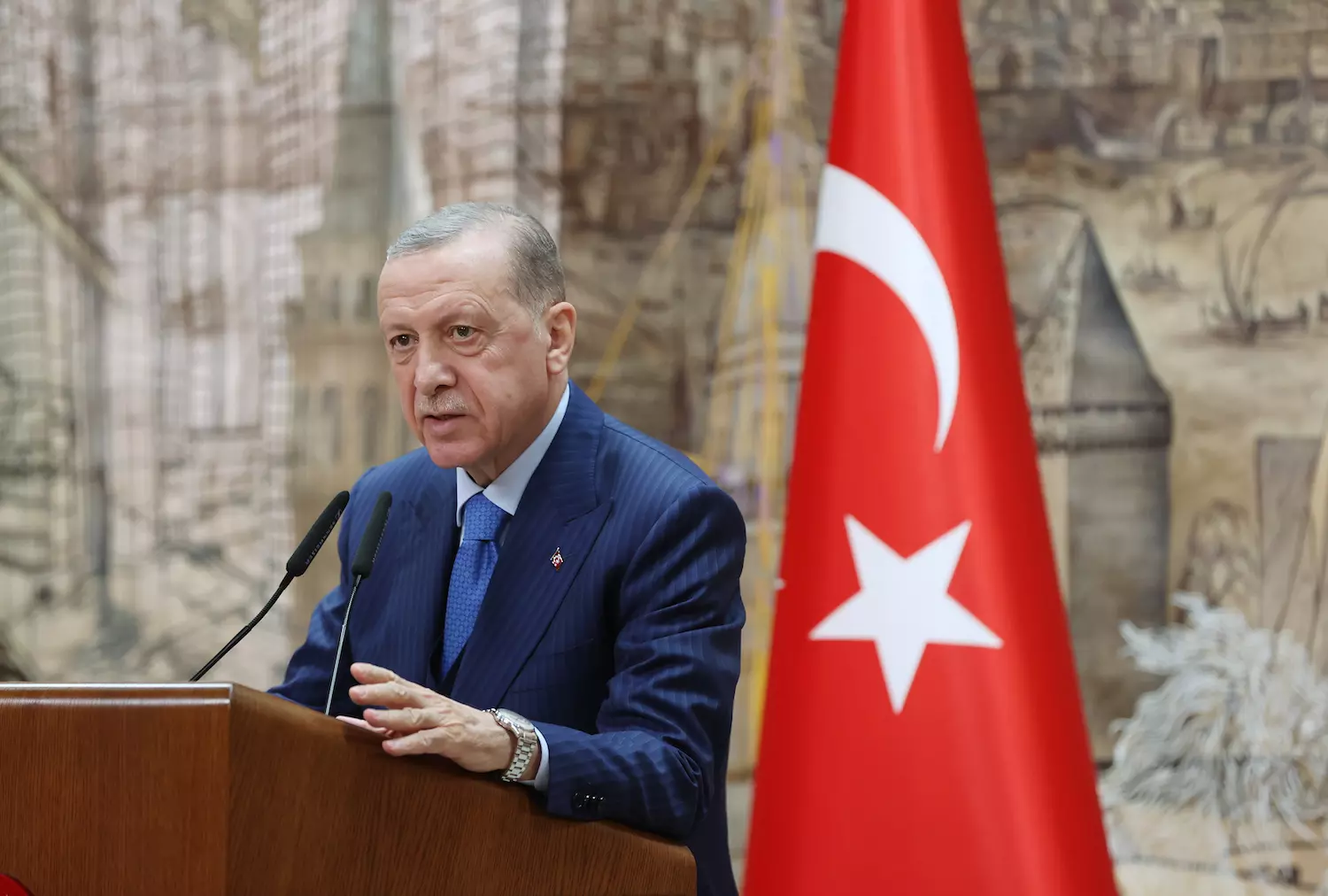President Erdoğan spoke at the palace of the Turkey National Risk Shield Meeting

Türkiye on Friday launched its "risk shield" model for building new residential homes consolidated against future disasters after last month's devastating earthquakes in the country's south, the country's President Recep Tayyip Erdogan announced.
"We have quickly launched the construction of new houses and living spaces, starting with projects whose ground and feasibility studies have already been completed," Erdogan said at a meeting in Istanbul with high-level officials, including Vice President Fuat Oktay, parliament speaker Mustafa Sentop, Communications Director Fahrettin Altun, and government ministers.
The aim of today's meeting is to form the intellectual basis of the Turkish National Risk Shield Model, he said, adding while creating this approach, all the dangers and threats can be taken into consideration under the title of the disaster that the country is facing.
Once damage assessments are complete, the number of new houses to be built in the quakes-hit region will become clear, Erdogan added as he addressed the Türkiye National Risk Shield Meeting at the Dolmabahce Presidential Office.
"While planning new houses, we are turning the direction of our cities from plains towards hills," he said, underlining that under the new model, areas with strong bedrocks would be preferred as much as possible.
"We aim to revive our ancient cities with an understanding that will keep our historical and cultural assets alive and also reinforce them against disaster," he said.
Reiterating his determination not to make any concession from the "horizontal architecture" style, he said the new buildings will be no more than three or four stories high above the ground floor.
"At this moment, we've determined 608,000 independent sections in 214,000 buildings that have collapsed or are severely damaged and will be demolished," Erdogan said.
Highlighting the country's efforts to heal the victims of the quake, Erdogan said the powerful tremors had "directly affected nearly 14 million people and led to 3.5 million people to migrate to other cities."
The victims are being hosted in tents, containers, dormitories, guesthouses, and hotels, he said, adding that there were also a large number of residents "who have gone to their villages or moved into the houses which have either been allocated for them or they themselves have rented in other cities."
Search and rescue efforts were followed by debris removal efforts, after which will come reconstruction and amelioration, he added.
Speaking at the closing session of the meeting late Friday, Erdogan said: "One of the first things we will do is to establish the Disaster Management Policies Board as the 10th policy board in addition to the 9 other ones under the Presidency."
”We will make the 6 February earthquakes, one of the greatest loss of life and destruction in our history, the beginning of a new milestone in disaster management," he said.
Erdogan expressed his determination to make Türkiye the country which is “most prepared for disasters and which can respond most quickly and effectively in the aftermath of disasters."
“Let’s act ‘right now’ for Türkiye to make our country a place that is prepared for disasters, survives disasters with the least loss, and then recovers quickly,” the president added.
More than 45,000 people died in Türkiye in the magnitude 7.7 and 7.6 earthquakes on Feb. 6. The earthquakes, which were centered in the province of Kahramanmaras, affected more than 13 million people across 11 provinces, including Hatay, Adana, Gaziantep, Diyarbakir, Adiyaman, Malatya, Kilis, Osmaniye, Elazig, and Sanliurfa.

